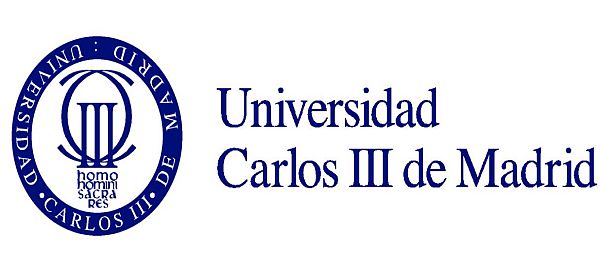
Are you interested in obtaining a solid background in economics? If yes, the Universidad Carlos III de Madrid (UC3M) makes available to you free online course named as “Fundamentals of Microeconomics”. The course aimed to learn how to analyze markets and gain a solid foundation in economic concepts.
The following topic covered by this free online course: Scarcity, opportunity cost, efficiency and equity, Government intervention, you will learn how to view markets from an economist’s perspective. The course will start on March 7, 2017.
Course At A Glance
- Length: 7 weeks
- Effort: 2-3 hours per week
- Subject: Economics & Finance
- Institution: Universidad Carlos III de Madrid (UC3M)
- Languages: English
- Price: Free
- Certificate Available: Yes
- Session: The course will start on March 7, 2017
Providers Details
- Carlos III University of Madrid (UC3M) was established by an Act of the Spanish Parliament on 5 May 1989, within the framework of the University Reform Act of 1983. From the outset it was intended to be a relatively small, innovative, public university, providing teaching of the highest quality and focused primarily on research. Our first Chancellor was Professor Gregorio Peces-Barba.
- The mission of Carlos III University of Madrid is to contribute to the improvement of society through teaching of the highest quality and cutting-edge research in line with stringent international guidelines. The University aspires to excellence in all its activities, with the aim of becoming one of the top universities in Europe.
Requirements
- Secondary school (high school) algebrater completing
- Basic mathematics concepts
- Reading basic graphs
About This Course
- Benefits: After completing the course you will get knowledge about economic concepts. You will learn rigorous approach that combines visual arguments with realistic examples to help you connect core economic concepts. The language of the course is English.
- Importance of the Subject in Today’s Scenario: Today microeconomics occupies a very important place in the study of economic theory. … It is microeconomics that tells us how a free market economy with its millions of consumers and producers work to decide about the allocation of productive resources among the thousands of goods and services.
How to Join This Course
You should register yourself through the given link to join this free on-line course: https://courses.edx.org/register
Course Format
Week 1: Introduction
Scarcity, opportunity cost, efficiency, and equity, how are resources allocated in reality? Theories, models, and assumptions.
Week 2: The Demand
The market. The model of perfect competition. Other market structures. The demand (I): Introduction. The demand (II): The unit-demand case. The demand (III): The general case. Marginal utilities. Market demands. Linear demands. Movements and shifts.
Week 3: The Supply
The unit supply case. The costs. The general case. Movements and shifts. Elasticities (I): Definitions. Elasticities (II): applications.
Week 4: The equilibrium
Definition. The relevance of the equilibrium: logical and experimental support. Applications of the equilibrium (I): comparative statics. Applications of the equilibrium (II): the welfare analysis. Measuring welfare. Estimating demand and supply in reality.
Week 5: Government intervention
Regulated prices. Taxes (I): classification. Taxes (II): analysis. Taxes (III): welfare. Taxes (IV): the incidence of a tax. Taxes (V): formal analysis.
Week 6: Market failures (I)
Introduction to market failures. Market power (I): definition. Market power (II): a model. Market power (III): the welfare analysis. Market power (IV): comparative statics. Market power (V): barriers to entry. Market power (VI): solutions. Asymmetric information. Adverse selection. Moral hazard.
Week 7: Market failures (II)
Externalities (I). Classification of externalities. Externalities (II) Private solutions to externalities. Externalities (III) Public solutions to externalities. Public goods (I): definition. Public goods (II): analysis.
Why Take This Course
- Advantage of Course: This course follows a rigorous approach that combines visual arguments with realistic examples to help you connect core economic concepts with your own experience.
- Certificate: You can pursue a Verified Certificate to highlight the knowledge and skills you gain ($50). The Certificate and transcript give you evidence to show during job or university applications, or appraisals.
Learning Outcomes
- Basic tools of analysis in economics
- The model of perfect competition and its elements
- Elasticities and their applications
- Taxes, subsidies, and government intervention
- Why markets fail and what to do about it:
- Market power
- Asymmetric information
- Externalities
- Public goods
Instructors
- Ángel Hernando-Veciana: He received his Ph.D. in the University College London in 2001. He is currently an associate professor in the Department of Economics at Univ.
- Geovani Hiniesto Bazan: He is an economic graduate with ample experience in teaching economics at the high school level. Director of the high school Domenico Scarlatti since 2006 to 2011 and director of the department of economics at the same school since 2011.
- Jose María Aguilar: He is a Law graduate holding a postgraduate degree in Economics. Practicing lawyer, Independent Advisor to the Economic and Social Council in Madrid, a researcher at the Universidad Complutense de Madrid and lecturer at several universities and institutions (Universidad Complutense, Universidad Carlos III, Universidad Internacional de la Rioja, ISDE and RCU Escorial María Cristina).
- Sebastian Panthoefer: He is a Ph.D. candidate in Economics at Universidad Carlos III de Madrid since 2011. His research is focused on health economics and industrial organization.
Suggested Reading
The only required knowledge is certain familiarity with graph reading and basic high school mathematics.
You Might Also Be Interested In
If you are interested you can also join “AP® Macroeconomics” free online course.
Conclusion
- At the end of this course, you will be able to answer questions like:
- Why do most people in rich countries have a mortgage and why is it a problem that those in the developing world do not?
- Why is the environment one of the most challenging problems of modern societies?
- How could we estimate the economic impact of cannabis legalization?
- Receive an instructor-signed certificate with the institution’s logo to verify your achievement and increase your job prospects. Add the certificate to your CV or resume, or post it directly on LinkedIn.
Detailed Information
For more information about the course, you can check the given link:
https://www.edx.org/course/fundamentals-microeconomics-uc3mx-eco-1x#!

